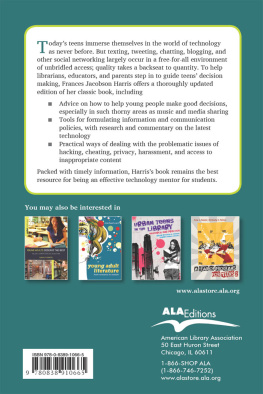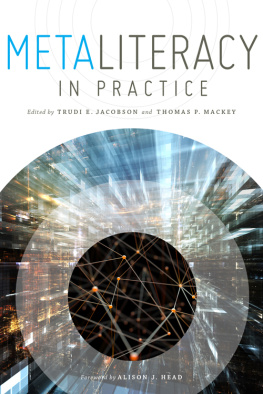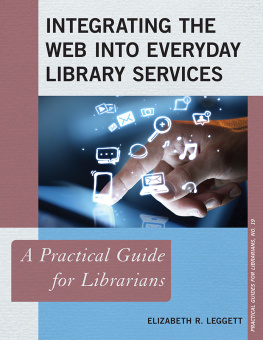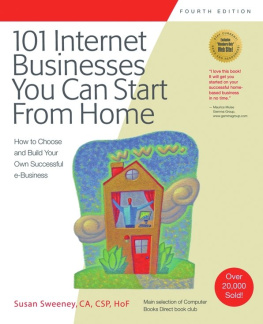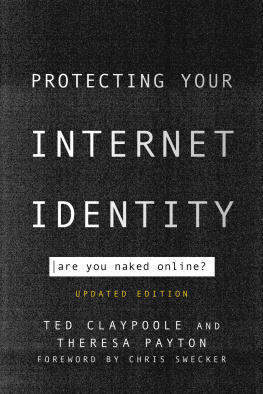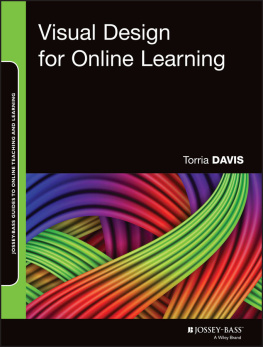Frances Jacobson. - I Found It on the Internet: Coming of Age Online
Here you can read online Frances Jacobson. - I Found It on the Internet: Coming of Age Online full text of the book (entire story) in english for free. Download pdf and epub, get meaning, cover and reviews about this ebook. year: 2011, publisher: ALA Editions;Editions Karthala, genre: Politics. Description of the work, (preface) as well as reviews are available. Best literature library LitArk.com created for fans of good reading and offers a wide selection of genres:
Romance novel
Science fiction
Adventure
Detective
Science
History
Home and family
Prose
Art
Politics
Computer
Non-fiction
Religion
Business
Children
Humor
Choose a favorite category and find really read worthwhile books. Enjoy immersion in the world of imagination, feel the emotions of the characters or learn something new for yourself, make an fascinating discovery.
- Book:I Found It on the Internet: Coming of Age Online
- Author:
- Publisher:ALA Editions;Editions Karthala
- Genre:
- Year:2011
- Rating:5 / 5
- Favourites:Add to favourites
- Your mark:
- 100
- 1
- 2
- 3
- 4
- 5
I Found It on the Internet: Coming of Age Online: summary, description and annotation
We offer to read an annotation, description, summary or preface (depends on what the author of the book "I Found It on the Internet: Coming of Age Online" wrote himself). If you haven't found the necessary information about the book — write in the comments, we will try to find it.
Packed with timely information, Harriss book remains the best resource for being an effective technology mentor for students.
I Found It on the Internet: Coming of Age Online — read online for free the complete book (whole text) full work
Below is the text of the book, divided by pages. System saving the place of the last page read, allows you to conveniently read the book "I Found It on the Internet: Coming of Age Online" online for free, without having to search again every time where you left off. Put a bookmark, and you can go to the page where you finished reading at any time.
Font size:
Interval:
Bookmark:


i found it
on the internet
ALA Editions purchases fund advocacy, awareness, and
accreditation programs for library professionals worldwide.
on the internet
Chicago 2011
FRANCES JACOBSON HARRIS is the librarian at University Laboratory High School, University of Illinois at Urbana-Champaign, and is professor of library administration, University Library. She team-teaches a required computer literacy course sequence for eighth- and ninth-grade students that includes information-literacy and Internet-ethics components. Harris is the author of many articles and presents frequently on topics related to young adults, Internet ethics, and digital information. She earned her masters degree in library and information science at the University of Denver.
2011 by the American Library Association. Any claim of copyright is subject to applicable limitations and exceptions, such as rights of fair use and library copying pursuant to Sections 107 and 108 of the U.S. Copyright Act. No copyright is claimed in content that is in the public domain, such as works of the U.S. government.
Printed in the United States of America
15 14 13 12 11 5 4 3 2 1
While extensive effort has gone into ensuring the reliability of the information in this book, the publisher makes no warranty, express or implied, with respect to the material contained herein.
ISBN-13: 978-0-8389-1066-5
Library of Congress Cataloging-in-Publication Data
Harris, Frances Jacobson.
I found it on the Internet : coming of age online / Frances Jacobson Harris. -- 2nd ed.
p. cm.
Includes bibliographical references and index.
ISBN 978-0-8389-1066-5 (alk. paper)
1. Libraries and teenagers. 2. Internet and teenagers. 3. Internet in school libraries. 4. Internet--Social aspects. 5. Internet--Moral and ethical aspects. 6. Information retrieval. 7. Information literacy--Study and teaching. 8. Libraries and the Internet. 9. Information technology--social aspects. I. title.
Z718.5.H38 2011
025.04--dc22
2010013644
Book cover and text design in Andika Basic and Charis SIL by Karen Sheets de Gracia. Cover illustration Piko72/Shutterstock, Inc.
 This paper meets the requirements of ANSI/NISO Z39.48-1992 (Permanence of Paper).
This paper meets the requirements of ANSI/NISO Z39.48-1992 (Permanence of Paper).
ALA Editions also publishes its books in a variety of electronic formats. For more information, visit the ALA Store at www.alastore.ala.org and select eEditions.
B ack in the fall of 1987, during my first week on the job at the University of Illinois at Urbana-Champaigns University Laboratory High School, two boys climbed out of a library window onto our aged second-floor balcony and proceeded to bombard the students below with water from their high-powered squirt guns. At that time the library had one computer, which we booted up from a cassette tape player. It connected us to a regional union catalog that students searched using a command line interface to find books in our library. Today, our students are just as likely to bombard one another with barbed digital missives as they are with water. In the library, they now have access to multiple full-service computer workstations, all with high-speed Internet access and links to a wide variety of user-friendly catalogs and databases. Clearly, many things are different now than they were in 1987 (or 1967 or 1947, for that matter). Our tools and systems have changed dramatically. But other things are not so different. The teenagers who use the tools and systems are still teenagers.
As a school librarian for more than twenty years and an academic librarian for eight years prior to that, I have seen many exciting developments in information and communication technologies. I have also seen how teenagers alter their modus operandi as a result of growing up with ever-evolving new technologies. The first edition of this book, published just a few years ago, makes no mention of the social media technologies that permeate todays digital world. Unfortunately, the popular press focuses a good deal of attention on problems that arise from teens use of social media, including their eagerness to expose their personal lives online and the ease with which they can access and share all manner of digital content. But the attention paid to these high-profile issues misses the point by oversimplifying the complex issues that are involved. In my experience, teens personal, social, and intellectual development is now inextricably tied to developments in the wider worlds of communication and information technologies. We cannot stop or even slow down these changes. Instead, it is essential to acknowledge their impact and try to understand the ways in which the full range of youth experience is affected by them.
I have also come to believe that the impact of digital technologies is more complex than the pervasive focus on generational differences would imply. It is no longer terribly helpful to reduce our analyses of technology integration to differences in how technology is used by adults, teens, or Generations A, B, and C. Teens are not equally adept at (or even interested in) all forms of new technology. Socioeconomic and cultural factors also influence levels of engagement. Perhaps one generalization that can be made is that age does drive expectations and assumptions about technology. For this generation and the generations to come, digital connectivity is part of the landscape of life. By virtue of its very ubiquity, technology itself has ceased to be the important factor. Instead, it is the activitywhat young people are doing with the technologythat defines the experience. Rather than speaking in terms of generational differences, it makes more sense to look at teens activities and relationships, with an eye toward how technology might influence or shape those.
For these reasons, I prefer to think of young peoples use of technology and media in ecological terms because the activities and their tools are so interconnected. Findings from the large-scale ethnographic project Kids Informal Learning with Digital Media, funded by the John D. and Catherine T. MacArthur Foundation, reveal that young peoples use of digital media is both friendship-driven and interest-driven (Ito et al. 2010). Teens levels of engagement are defined along a continuum of practice that ranges from hanging out, to messing around, to the more invested geeking out, depending on individual interest in a given media activity. The researchers found this construct to be more meaningful than trying to categorize their subjects activity using quantitative variables like media type, frequency of media use, or demographic categories such as gender, age, or socioeconomic status. By focusing on personal relationships and levels of investment, the findings are more reflective of technical, social, and cultural patterns. Findings also acknowledge ways in which different youth at different times possess varying levels of technology and media-related expertise, interest, and motivation (Ito et al. 2010, 36). In other words, the researchers recognize teens as differentiated individuals with personal agency. As someone who works with teens on a daily basis, I find this perspective from the academy refreshing.
Font size:
Interval:
Bookmark:
Similar books «I Found It on the Internet: Coming of Age Online»
Look at similar books to I Found It on the Internet: Coming of Age Online. We have selected literature similar in name and meaning in the hope of providing readers with more options to find new, interesting, not yet read works.
Discussion, reviews of the book I Found It on the Internet: Coming of Age Online and just readers' own opinions. Leave your comments, write what you think about the work, its meaning or the main characters. Specify what exactly you liked and what you didn't like, and why you think so.

